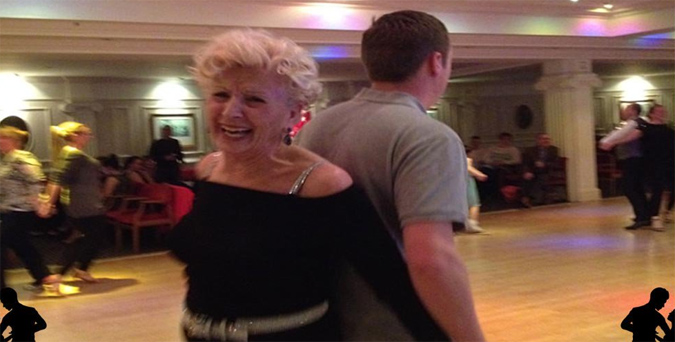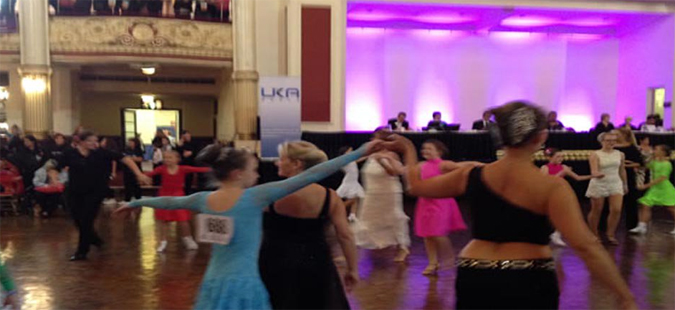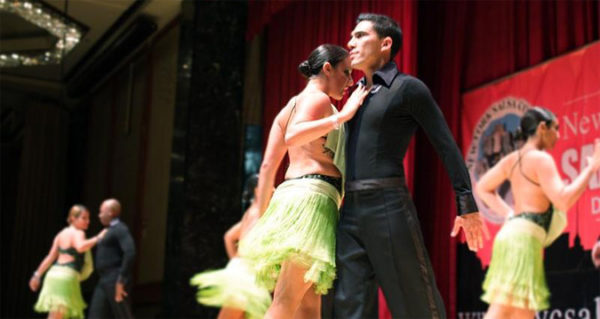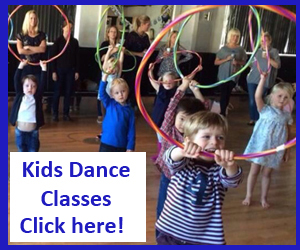What are the Health Benefits of Dancing?

Having fun dancing in Strictly Smartz
Dancing is probably one of the most relaxing things you can ever do. You can do it on your own, with a partner or in groups. Also, you can do it anywhere; you can dance at a social gathering, at home with your spouse or you can even dance alone in the shower! Wherever and whoever you do it with, dancing is always entertaining and relaxing. But, we all know very little about the health benefits of dancing and they are very often underestimated and overlooked by everyone. So, let’s look at some important health benefits that we can gain from dancing.
1. It sharpens your memory
A lot of experts have claimed that dancing can make a significant improvement in a person’s ability to remember things. Aga Burzynska, who is an assistant professor at the Colorado University conducted a study and has found out that dancing has helped to keep older adults active and that has helped to boost their memory. Furthermore, according to the New England Journal of Medicine, dancing can even help to prevent dementia.
So, how does dancing contribute to improve your memory? Studies have revealed that physical activities like dancing can prevent and recover volume losses in the part of the brain called the hippocampus. Researchers who have conducted studies on this matter have described that dancing helps to build memory more effectively compared to other forms of aerobic exercises because there is a lot of learning and remembering involved in dancing.
2. It improves your balance and flexibility
Dance movements involve a lot of balancing. This is because it requires you to be well aware of the movements of all the muscles in your body, maintain a good posture, have a strong centre of gravity and perform fast actions. So, this contributes to improve the coordination of your muscles, your spatial awareness and stabilizes your body, allowing you to gain better control over your body.
Dancing can help to relax your muscles and improve flexibility through reducing stiffness. If you are dancing properly, you know how important it is to stretch your muscles before you begin. So, the more you dance the more consistently you will stretch. This way you can become more flexible because prolonged stretching helps to permanently lengthen your muscles. This can help to relive joint pain and soreness after exercising.

3. It’s good for your heart
If you are at risk of getting cardio vascular disease or if you want to avoid the risk, doctors recommend dancing. A study done in Italy revealed that engaging in dancing as a form of exercise can help to significantly improve a person’s heart health, respiration and their quality of life more, compared to other forms of exercising such as cycling. Dancing will also help you to improve your strength and stamina, a gain a steady and strong heartbeat as well as to breath steadily because dancing improves your heart and lungs.
4. It will help you to lose weight
Dancing is a very physically engaging activity that requires the co-ordination of all the muscles in your body. Therefore, dancing will engage all the muscles in your body and help to tone them all equally. A study published in a Journal related to Physical Anthropology demonstrated how dancing is as equally effective as cycling or jogging to tone and strengthen your body.
An article published by the University of California cites that an average person will burn nearly 240 calories per hour on average when dancing. This can depend on the type of dancing too. While slow dances such as Tango will only burn less than 200 calories per hour, swift dances such as step dancing can burn up to 500 calories per hour.
5. It improves your social relationships and confidence
More often than not, dancing is a social activity. It helps to create an enjoyable environment and gives people a chance to meet new people who have similar interests to them. This kind of an environment is perfect for a person to use their social skills and strengthen their social relationships.
Dancing can also contribute towards improving a person’s confidence. Learning new dance steps, dancing in front of a crowd, meeting new people and socializing with them can help to improve a person’s confidence.
6. It can help eliminate depression and stress
Another wonderful benefit of dancing is that it can help to prevent or cure mild depression because dancing improves your self-confidence. According to a study published in the International Journal of Neurological Sciences, dancing increases the level of dopamine and serotonin in the brain to reduce stress while lowering the levels of depression.
This is because dancing helps you to live in the moment and only focus on the music and your body. So, it makes you forget about all your other worries. Dancing makes you enjoy and be happy which reduces the levels of cortisol (hormone related to stress) in your brain. This contributes towards lowering your stress and tension levels.
7. It can even make you smarter!
Since recently, dancing has been praised for its ability to make dancers more intelligent. The core of intelligence is making swift and calculated decisions. Dancing involves a lot of activities that requires quick decision making. For instance, when dancing, you need to decide what your next move is, you need to predict what your partner is going to do next and also you need to carefully listen to the music and co-ordinate your movements with the music accordingly. This way, dancing can train you to enhance your decision-making process which will make you more intelligent.
8. It increases your energy
If you’re sitting on your couch all day, not doing anything, taking a few dance lessons might help. A research in the Scholarly Publishing and Academic Resources Coalition has presented that dancing helped to improve the energy levels and physical performance of adults. Since dancing is an activity that requires your arms, legs, ears, eyes and your ears to co-ordinate with each other, it will help to bring your energy levels up. It will also train you to always be on alert and be in control of your body.
These amazing health benefits of dancing are often overlooked by both people and medical professionals. But, it is important for us to understand that dancing is a great way for you to improve your health while taking the edge off and having some fun!







